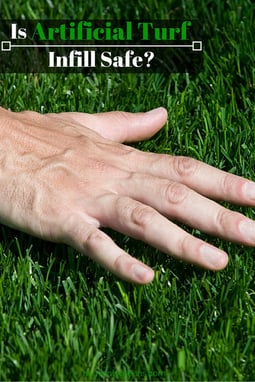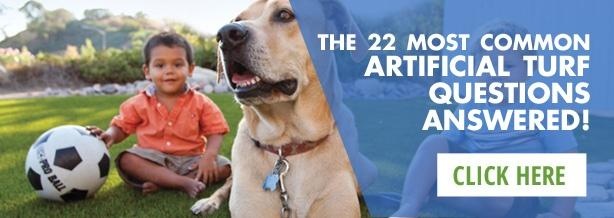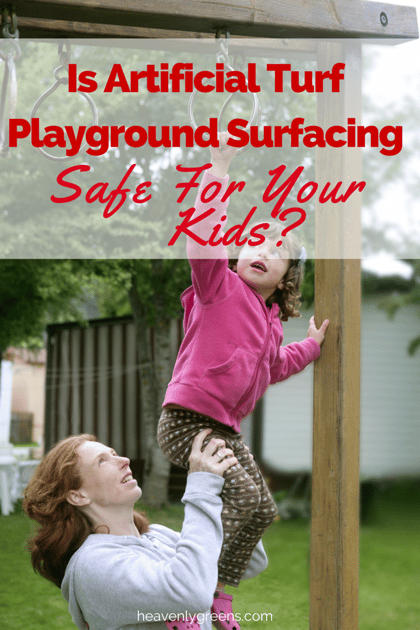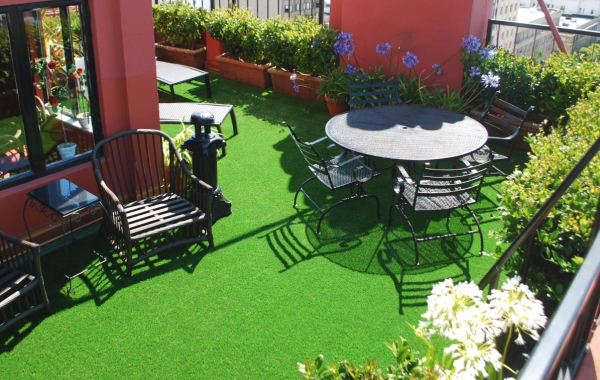 In California and other states that face severe and devastating drought conditions, artificial turf has become a saving grace. It does not require water and needs little to no maintenance. It allows homeowners to remain in compliance with both their HOA's guidelines concerning home beautification as well as city and state legislation that restricts water usage. One of the biggest concerns homeowners have, however, is the different types of artificial turf infill and whether or not they are safe for both children and pets.
In California and other states that face severe and devastating drought conditions, artificial turf has become a saving grace. It does not require water and needs little to no maintenance. It allows homeowners to remain in compliance with both their HOA's guidelines concerning home beautification as well as city and state legislation that restricts water usage. One of the biggest concerns homeowners have, however, is the different types of artificial turf infill and whether or not they are safe for both children and pets.
Crumb Rubber
One of the cheapest and most sustainable forms of artificial turf infill is crumb rubber. Crumb rubber is made by shredding used car tires that have been brought in for recycling. The resulting “crumbs” or small pieces of rubber are extremely durable and can withstand a large volume of foot traffic without degrading or breaking down.
The use of crumb rubber has been cause for debate for several years. While environmental groups liked the thought of repurposing the old tires, many were concerned that as the rubber broke down, harmful contaminants would be released. Studies have proven, however, that crumb rubber infill is safe for both children and pets. Break down is minimal and very few chemical components are released even when the the rubber is exposed to high temperatures and extreme cold.
Pea or Chip Gravel
Pea or chip gravel is one of the safest of the products used as artificial turf infill. Since it is stone, it does not break down, does not release any hazardous by products and is sustainable throughout the lifetime of the turf. One of the biggest draw backs of pea gravel and other forms of stone infill is that it can be less buoyant than sand or crumb rubber. It offers a firmer surface texture and will not be carried away by wind or water run off.
Sand
Sand is one of the most popular and least expensive of the artificial turf infill options. It does have its drawbacks and is often a better choice when it is mixed with one of the other types of infill. Sand has a tendency to pack down or become compressed when it is wet or is exposed to high traffic areas. When it is used in pet runs or where dogs tend to urinate, it can hold the odor if the turf is not rinsed on a regular basis. When mixed with a silica based sand, both work together to create a softer surface cover. Silica sand does not hold odors and does not pack as easily as regular landscaping sand.
Combinations of the Three
Some landscaping companies create their own version of artificial turf infill. Different types of sand or small stones work well together and are extremely durable. Any combination of infills can be used to create the type of surface the homeowner wants. While the biggest drawback of crumb rubber is the slight discoloration that may occur if it comes in contact with the skin, it is easily mixed with other types of products or can be used alone.
The choice of artificial turf infill is primarily up to the homeowner. The landscaping professional who is installing the artificial turf can offer suggestions as to what type of infill will be most beneficial for the type of activities that will take place on the lawn. If you are on a budget, a mix may be the best option, providing you with the best of both worlds. Most infill products are easy to use and require little maintenance. Over time, alittle more of the infill may need to be added, but other than that there is little to worry about.










